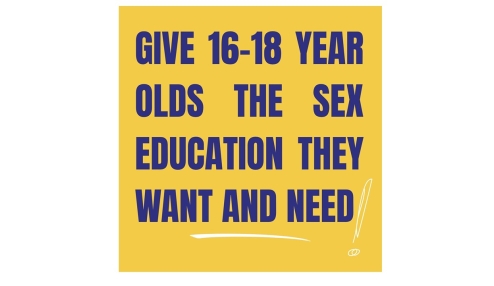Our Senior RSE Trainer, Dr. Eleanor Draeger looks at the subtleties of using teaching approaches in ways that ensure all pupils feel safe
When delivering Relationships and Sex Education (RSE) it is important to ensure that all pupils feel safe and supported during their lessons, especially when discussing topics such as sexuality, gender stereotypes, or relationships. This is covered in the Sex Education Forum’s statement of commitment; principle 4, which is that RSE in schools: “delivers lessons where pupils feel safe and encourages participation by using a variety of teaching approaches with opportunities to develop critical thinking and relationship skills”.
This week we have published a guide to support educators in creating a safe learning environment. This focuses on how to set up a learning agreement, which is an important starting point for both pupil and staff safety.
With a learning agreement in place there are lots of teaching methods to choose from. The key is to encourage participation and critical thinking while maintaining a safe space.
One way that you can make it more comfortable for students to discuss potentially awkward or challenging topics is to use a distancing technique. These techniques take many forms, and can include using role play, discussing how fictional characters would react in a particular situation, or using relevant TV shows to discuss a topic. However, it is still important to ensure that the way you are using your technique is not excluding anyone or making a student feel uncomfortable.
As an example, pictures of celebrities from magazines and newspapers are often used to facilitate a discussion about body image, sexual attraction and relationships, and this can work really well. But how the activity is facilitated is crucial.
If all the boys were asked to rate the female celebrities, and all the girls to rate the male celebrities, then you run the risk of making many students uncomfortable. This would exclude anyone who does not identify as heterosexual and could be threatening for students with low self-esteem or an atypical body type.
A safer approach would be to divide a pre-prepared pile of pictures (which could include celebrities but not be limited to them) between two or more groups. Ask students if they notice any patterns about the body type and style of the people in the pictures. How does it vary for pictures of men and women? Is there a difference between pictures of people used in adverts compared to real-life stories?
Ask each group to choose one or two pictures that they have something to say about. Allow time for the groups to present their chosen pictures and use this to generate a discussion. Working in the full group ask additional questions such as: 'Do any of the images show people who have moles/beauty spots, freckles, scars, hair extensions, tattoos, piercings, plastic surgery, pubic hair?', and 'Do any of the images show people with a disability?'
It is important when planning any RSE lesson to make sure that you have considered how safe the activity will be for all of your students, and how they can all participate in a constructive and non-threatening way. And of course the lesson needs to feel safe for you too, which brings us back full circle to the importance of using a learning agreement as this will establish boundaries such as ‘no personal questions’. We always use this when training professionals too.
For more support with developing your RSE practice have a look at our calendar of events and training including our one-day coruse ‘Get Ready for Statutory RSE’ which walks you through all 12 of our principles for school RSE and gives you plenty of opportunity to explore a range of teaching approaches and techniques.
Dr. Eleanor Draeger
Senior RSE Trainer, Sex Education Forum
30 April 2018




Share